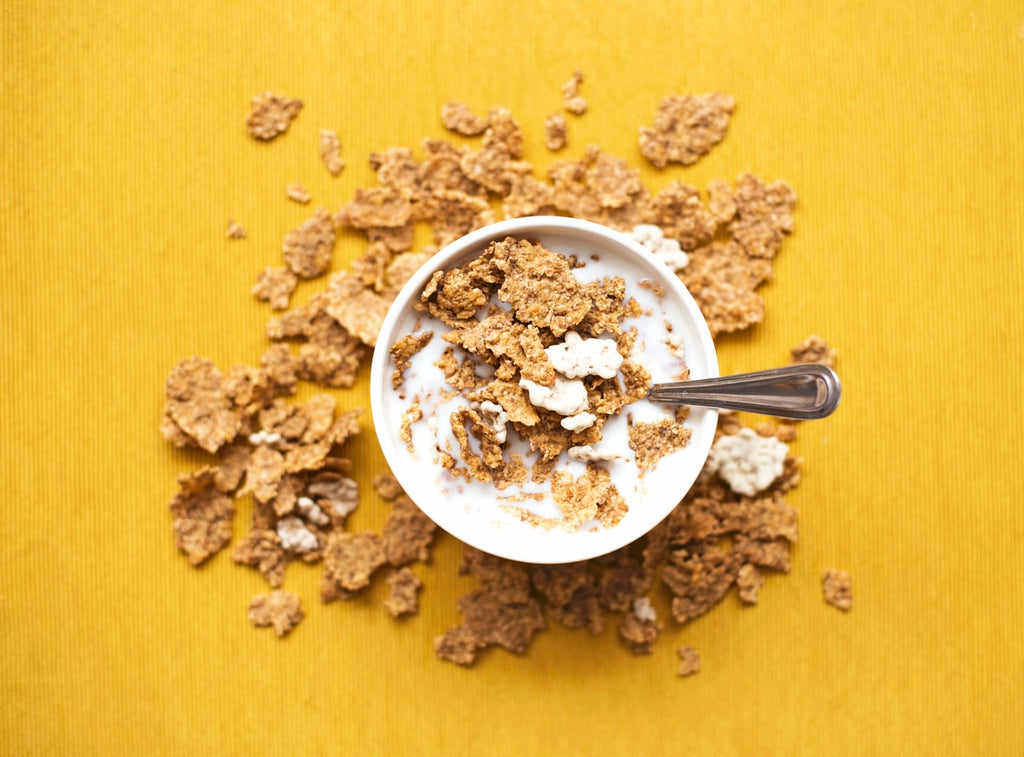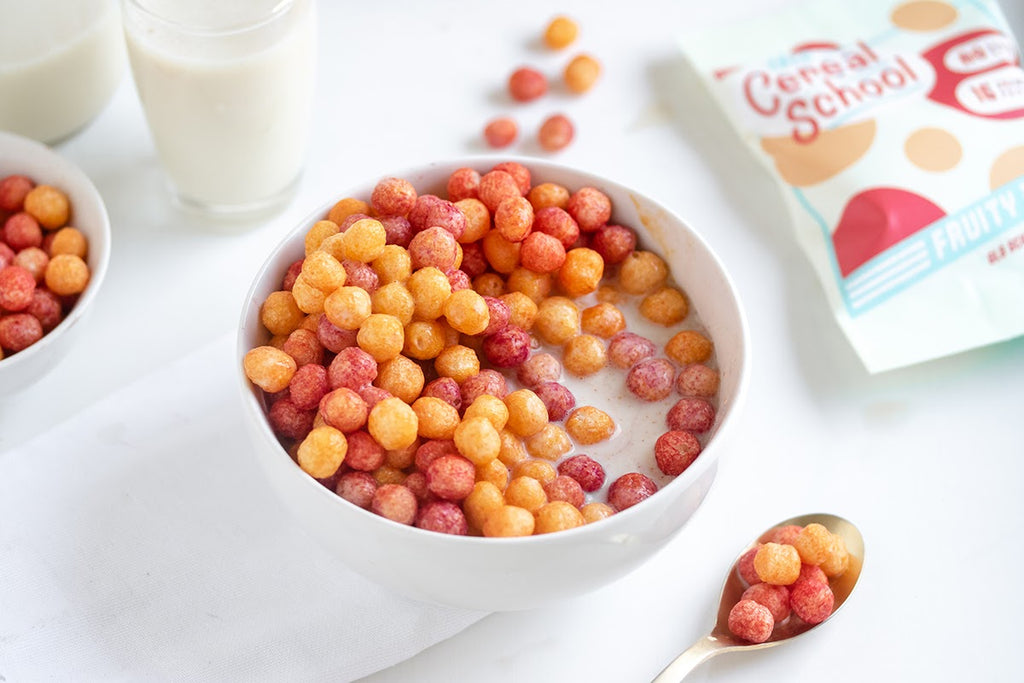When we think of the word “diet,” we start picturing everything we don’t want to eat. You know, like rice cakes, plain kale, celery juice, and just about every other bland, boring food we have to force down. So when we heard the phrase “cereal diet,” all we could think is — isn’t that an oxymoron?
Everything we know about a diet tells us we shouldn’t actually enjoy the foods we’re eating. But a diet that gives us the green light to indulge in the food closest to our hearts (and always in our stomachs)? Sign us up!
But since a cereal diet seems just a bit too good to be true, we went into detective mode. We reviewed various meal plans, studies, and anecdotes from people who survived on cereal for a week or more. Here’s what we discovered.
What Is the Cereal Diet?
The cereal diet is about as simple as it sounds (as far as diets go, that is). There are no counting calories, tallying up your macros, or browsing through “eat” and “do not eat” food lists. Instead, you’ll replace two entire meals with a bowl of cereal and low-fat milk. You’ll enjoy a “regular” meal for your third meal of the day, filled with green, leafy vegetables and a high-quality protein source.
How Did the Cereal Diet Start?
The cereal diet started with Kellogg’s Special K cereal. Nicknamed the Special K Challenge, people started noticing weight loss eating Special K for two meals a day for two weeks straight. Whether toning up for a beach or slimming for a wedding, consumers claimed to lose as much as 12 pounds in just 12 days.
To accommodate cereal dieters, Kellogg’s launched a full line of snacks, bars, and meal replacement shakes. Consumers could replace their cereal and milk with any special K product, then snack on fruits and vegetables between meals.
What Does a Cereal Diet Plan Look Like?
A cereal diet or Special K Challenge looks pretty simple. On any given day, here’s what your eating habits may look like:
- Breakfast: a bowl of cereal with non-dairy or skim milk
- Mid-morning snack: celery sticks and hummus
- Lunch: a bowl of cereal with non-dairy or skim milk, or a protein snack bar, cereal bar, or protein meal shake
- Afternoon snack: A cup of fresh fruit and a Special K snack bar
- Dinner: Roasted chicken breast, quinoa, and sauteed kale
Can Eating Cereal for Two Meals a Day Lead to Weight Loss?

As any dietitian will tell you, if you cut enough calories, virtually any diet can lead to weight loss — at least in the short-term. And by eating a low-calorie bowl of cereal such as Special K, plain Corn Flakes, Shredded Wheat, plain Cheerios, or Rice Krispies, you most likely will lose weight.
But when it comes to getting some cold, hard facts on a diet based on eating cold cereal, the science is quite limiting (our nice way of calling it grossly biased). First, most (if not all) studies investigating the weight loss effects of eating nothing but breakfast cereal are limited to Special K. What’s more, these studies are funded by the brand behind the product: Kellogg’s.
For example, a Kellogg’s-funded study monitored 24 adults over the course of two weeks. The study found that the Special K Challenge reduced total calorie intake by 673 calories per day. It also reduced participants’ fat intake by 50%, or roughly 40 grams. Some individuals saw as much as a 10% loss in total body fat and lost an average of 1.6-1.9 kilos, or 3.5-4.2 pounds.
The study also publicized other potential benefits, including the increased amount of dietary fiber and whole grains consumed.
Are There Any Drawbacks to a Cereal Diet?
Listen, we make cereal for a living. We love the stuff, and regularly replace traditional meals with a bowl of breakfast cereal. But even we have issues with this particular diet, which we’ll dive into next.
New Science Shows It’s Not Just About the Calories
The marketing team at Kellogg’s tend to focus their bragging rights on the low-fat, low-calorie benefits of their cereal. But here’s what they don’t tell you: Their breakfast cereals are not low-sugar or low-carb, which could hinder your progress.
For years, science told us that a low-fat, high-carb diet was the best route to a healthy diet. (Remember when whole grains formed the base of the food pyramid? Yeah, we thought we were past all that.).
However, more recent science shows that a diet low in total carbohydrates may be the most efficient way to lose weight and body fat. Some studies show that low-carb diets can help people lose three times more weight than those on low-fat diets.
On the Cereal Diet, Avoid These High-Carb, High-Sugar Cereals
If you’re really interested in trying the cereal diet, choose a cereal that’s low in sugar and carbs. And, sorry to burst your cereal bubble, but most breakfast cereals lining store shelves just won’t make the (carb) cut. Just take a look at the carb and sugar content of these popular and supposedly “healthy” cereals:
- Plain Cheerios: With just 3 grams of protein, Cheerios aren’t enough to tide you over until your next meal. Plus, there are an astronomical 20 grams of carbs in a single cup.
- Special K: The product that launched the cereal diet, Special K contains 5 grams of sugar (4 of which are from added sugars) and 29 grams of carbs per serving. Plus, it contains less than a gram of dietary fiber.
- Kashi Go: It’s often advertised as a healthy breakfast option, but Kashi Go contains 13 grams of sugar per serving.
- Barbara’s Peanut Butter Puffins: Puffins are gluten-free, vegan, and non-GMO verified, but that doesn’t mean they’re good for you. One bowl contains 6 grams of sugar and 23 grams of carbs.
- Frosted Flakes: When we say it’s not all about the calories, this is what we’re talking about. Frosted Flakes may only contain 140 calories per cup, but they’ll weigh you down with 14 grams of sugar and 34 grams of carbs.
- Corn Flakes: Even plain ol’ Corn Flakes contain more carbs than you’d expect. In just one bowl, you’ll get 24 grams of total carbohydrates.
If You Want to Try the Cereal Diet, Look for a Low-Sugar, Low-Carb Cereal
We have to be honest here: As much as we love cereal, we would never advise following a diet based solely on its consumption. And we certainly aren’t tasking our marketing department to start a cereal diet campaign for the sole sake of making a profit.
We want to do better.
We love eating cereal as an entire meal. One of our favorite dinnertime routines is snuggling up with a bowl of cereal on the sofa, turning on Netflix, and indulging in one of our favorite foods. We have no problem replacing our afternoon snacks with a bag of Cereal School, but we would never tell you to eat nothing but cereal for two weeks straight.
Research shows that a healthy diet is made of healthy fats, high protein, and minimal sugars. That’s why we designed every Cereal School flavor to contain zero grams of sugar and 16 grams of protein — to keep you fueled throughout the day.
We also love sharing some of our favorite high-protein, low-carb breakfast recipes from across the internet. If you’re looking to build a balanced, sustainable diet, you can find some of our favorite recipes here, here, and here. Enjoy!





